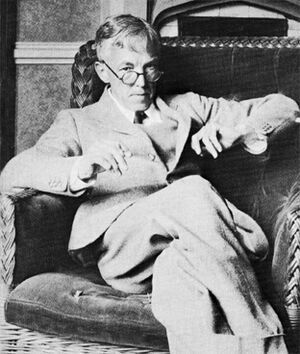G. H. Hardy (nonfiction): Difference between revisions
Jump to navigation
Jump to search
No edit summary |
No edit summary |
||
| Line 16: | Line 16: | ||
== Nonfiction cross-reference == | == Nonfiction cross-reference == | ||
* [[Harald Cramér (nonfiction)]] - influenced by Hardy | |||
* [[Mathematics (nonfiction)]] | * [[Mathematics (nonfiction)]] | ||
* [[Srinivasa Ramanujan (nonfiction)]] | * [[Srinivasa Ramanujan (nonfiction)]] | ||
| Line 23: | Line 24: | ||
* [https://en.wikipedia.org/wiki/G._H._Hardy G.H. Hardy] @ Wikipedia | * [https://en.wikipedia.org/wiki/G._H._Hardy G.H. Hardy] @ Wikipedia | ||
[[Category:Nonfiction (nonfiction)]] | [[Category:Nonfiction (nonfiction)]] | ||
[[Category:Mathematicians (nonfiction)]] | [[Category:Mathematicians (nonfiction)]] | ||
[[Category:People (nonfiction)]] | [[Category:People (nonfiction)]] | ||
Revision as of 10:43, 4 September 2017
Godfrey Harold "G. H." Hardy FRS (7 February 1877 – 1 December 1947) was an English mathematician, known for his achievements in number theory and mathematical analysis.
In biology, Hardy is known for the Hardy–Weinberg principle, a basic principle of population genetics.
In addition to his research, Hardy is remembered for his 1940 essay on the aesthetics of mathematics, entitled A Mathematician's Apology.
He was the mentor of the Indian mathematician Srinivasa Ramanujan.
In the News
Fiction cross-reference
Nonfiction cross-reference
- Harald Cramér (nonfiction) - influenced by Hardy
- Mathematics (nonfiction)
- Srinivasa Ramanujan (nonfiction)
External links:
- G.H. Hardy @ Wikipedia
